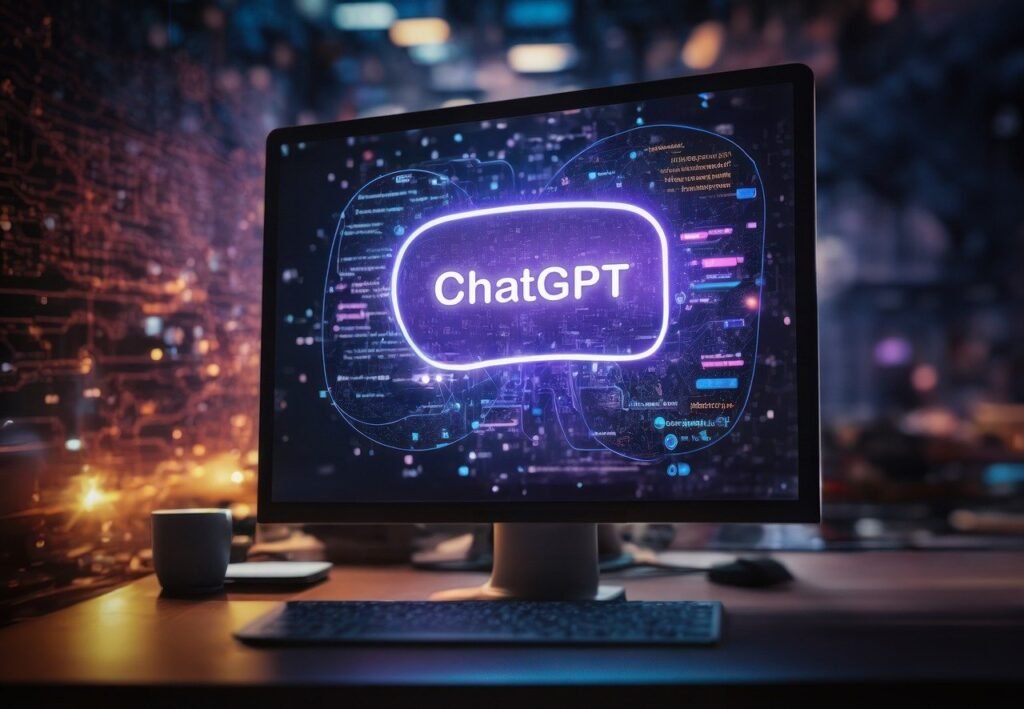
ChatGPT, developed by OpenAI, is one of the most advanced language models available today. It represents a significant leap forward in natural language processing (NLP), capable of generating human-like text based on the input it receives. This blog will delve into the origins, capabilities, applications, and future prospects of ChatGPT, offering a comprehensive overview of this groundbreaking technology.
Starting at age 44, your energy, metabolism, and overall well-being may be silently declining. Don’t wait for symptoms.
ChatGPT Origins and Development
The ChatGPT Series:
- GPT (Generative Pre-trained Transformer): The original GPT model was introduced by OpenAI in 2018. It demonstrated that a transformer-based architecture, when pre-trained on large text corpora, could generate coherent and contextually relevant text.
- GPT-2: Released in 2019, GPT-2 featured 1.5 billion parameters, a tenfold increase from its predecessor. Its ability to generate highly convincing text led to initial concerns about misuse, delaying its full release.
- GPT-3: Launched in 2020, GPT-3 is the third generation of the model, boasting 175 billion parameters. It set new standards in the field of NLP with its ability to perform tasks it was not explicitly trained for, such as translation, question-answering, and creative writing.
Evolution to ChatGPT:
- Specialization for Conversational AI: While GPT-3 excels in a variety of NLP tasks, ChatGPT is specifically fine-tuned for conversational interactions. This specialization involves training on dialogue datasets, allowing it to understand and generate contextually appropriate responses in a conversational setting.
ChatGPT-4:
Key Differences Between ChatGPT-3 and ChatGPT-4
Model Size and Complexity:
Parameter Count:
ChatGPT-3: Boasts 175 billion parameters, making it one of the largest language models at its release.
ChatGPT-4: Further increases the parameter count, significantly enhancing its ability to understand and generate text. While the exact number of parameters hasn’t been disclosed, it’s understood to be much larger than GPT-3.
Performance and Accuracy:
Improved Understanding:
ChatGPT-3: Exhibits strong performance in a variety of tasks but sometimes struggles with maintaining context in longer conversations and can generate less accurate responses.
ChatGPT-4: Demonstrates better contextual understanding and coherence, especially over longer dialogues. It offers more accurate and relevant responses, reducing instances of factual errors and off-topic replies.
Task Specialization:
ChatGPT-3: Can handle a wide range of general tasks but lacks specialization.
ChatGPT-4: Shows improved performance in specialized tasks such as complex problem-solving, coding, and detailed explanations, making it more adept at professional and technical applications.
Language and Multimodal Capabilities:
Multilingual Proficiency:
ChatGPT-3: Supports multiple languages, primarily focused on English and a few other major languages.
ChatGPT-4: Expands its language support, providing better translations and more nuanced understanding across a broader spectrum of languages.
Multimodal Inputs:
ChatGPT-3: Primarily text-based with limited support for interpreting other types of data.
ChatGPT-4: Enhanced to potentially handle and interpret multiple forms of data, such as images and text, making it more versatile (depending on specific implementations and updates).
Adaptability and Customization:
User Interaction:
ChatGPT-3: Allows for some level of customization in responses but is limited in flexibility.
ChatGPT-4: Offers greater adaptability, allowing users to more precisely define the style, tone, and formality of the generated responses, thus providing more tailored outputs.
Ethical and Safety Improvements:
Bias and Fairness:
ChatGPT-3: Efforts were made to mitigate bias, but some issues persisted due to the model’s training data.
ChatGPT-4: Incorporates more advanced techniques to minimize bias and ensure fairer and more balanced responses, addressing some of the criticisms faced by its predecessor.
Content Moderation:
ChatGPT-3: Initial content moderation mechanisms were in place but required further refinement.
ChatGPT-4: Improved content moderation capabilities, reducing the generation of harmful or inappropriate content, and better alignment with OpenAI’s safety standards.
Efficiency and Scalability:
Operational Efficiency:
ChatGPT-3: Requires significant computational resources, which can be a limitation for some applications.
ChatGPT-4: Optimized for better efficiency, enabling faster processing times and potentially lower operational costs, making it more accessible for broader use cases.
In summary, ChatGPT-4 builds upon the foundation of ChatGPT-3 by offering improved accuracy, enhanced contextual understanding, better performance in specialized tasks, expanded language support, and increased adaptability. These advancements make ChatGPT-4 a more powerful and versatile tool for a wide applications range, addressing many of the limitations and challenges encountered with ChatGPT-3.
Capabilities of ChatGPT
Language Understanding and Generation:
- Contextual Comprehension: Chat GPT can maintain context over multiple turns of conversation, making interactions more coherent and meaningful.
- Diverse Applications: It can generate responses for a wide range of queries, from casual conversation to technical support, creative writing, and more.
Multilingual Proficiency:
- Language Translation: Chat GPT can translate text between numerous languages, facilitating cross-linguistic communication.
- Multilingual Conversations: It supports conversations in multiple languages, making it a versatile tool for global users.
Task-Specific Adaptability:
- Customizable Outputs: Users can specify the style, tone, and formality of ChatGPT’s responses, tailoring its output to specific needs.
- Task Performance: It can assist with tasks such as summarizing long texts, generating detailed explanations, and even creating educational content.
Creative and Cognitive Assistance:
- Creative Writing: Chat GPT can generate stories, poems, and scripts, aiding writers in overcoming writer’s block or exploring new ideas.
- Problem-Solving: It can help users brainstorm solutions to problems, providing insights and alternative perspectives.
ChatGPT Applications Across Various Domains
Customer Support:
- 24/7 Availability: Chat GPT can provide round-the-clock customer support, handling inquiries, troubleshooting issues, and offering product information.
- Scalability: It allows businesses to scale their customer support operations without a corresponding increase in human resources.
Education:
- Personalized Tutoring: Chat GPT can offer explanations, answer questions, and provide practice exercises tailored to the learner’s level and pace.
- Content Creation: It assists educators in creating lesson plans, quizzes, and educational materials.
Healthcare:
- Preliminary Consultation: While not a substitute for professional medical advice, Chat GPT can offer preliminary information on medical conditions and symptoms.
- Mental Health Support: It can provide conversational support for mental well-being, though with limitations and a recommendation for professional follow-up.
Content Creation and Marketing:
- Automated Writing: Chat GPT can generate blog posts, social media content, and marketing copy, helping businesses maintain a consistent content output.
- SEO Optimization: It can assist in creating SEO-friendly content, including keyword-rich articles and meta descriptions.
Entertainment:
- Interactive Storytelling: Chat GPT can be used to create interactive stories and games, enhancing user engagement through dynamic narratives.
- Virtual Companionship: It can serve as a virtual companion, engaging users in meaningful and enjoyable conversations.
ChatGPT Ethical Considerations and Challenges
Misinformation and Misuse:
- Content Generation Risks: The ability of Chat GPT to generate highly realistic text raises concerns about the potential spread of misinformation, fake news, and malicious content.
- Safeguards and Monitoring: OpenAI has implemented usage guidelines and moderation tools to mitigate these risks, but ongoing vigilance is required.
Bias and Fairness:
- Training Data Bias: The model’s responses are influenced by the data it was trained on, which may contain biases. This can result in biased or inappropriate outputs.
- Efforts to Mitigate Bias: OpenAI continuously works on improving the fairness and neutrality of Chat GPT, refining its training processes and incorporating feedback.
Privacy Concerns:
- Data Handling: Ensuring that user interactions with Chat GPT remain confidential and are handled responsibly is crucial.
- Transparency: OpenAI aims to maintain transparency about how data is used and stored, adhering to stringent privacy policies.
ChatGPT Future Prospects
Continuous Improvement:
- Model Enhancements: Ongoing research aims to enhance the capabilities of Chat GPT, making it more accurate, context-aware, and useful across a broader range of applications.
- User Feedback Integration: OpenAI values user feedback, which plays a critical role in identifying areas for improvement and guiding future development.
Expanding Applications:
- New Use Cases: As the technology evolves, new applications for Chat GPT are likely to emerge, particularly in areas such as personalized services, advanced analytics, and interactive entertainment.
- Industry Adoption: Broader adoption across industries is anticipated as businesses and organizations recognize the potential of ChatGPT to enhance efficiency and innovation.
Ethical AI Development:
- Responsible AI: OpenAI is committed to developing AI responsibly, ensuring that advancements in ChatGPT align with ethical standards and contribute positively to society.
- Collaborative Efforts: Collaboration with other research institutions, governments, and industry partners is key to addressing the challenges and maximizing the benefits of AI technology.
ChatGPT, Transforming Industries and Addressing Ethical Challenges in AI
ChatGPT represents a remarkable achievement in the field of artificial intelligence, showcasing the potential of advanced language models to transform various aspects of our lives. From enhancing customer support and education to driving innovation in content creation and entertainment, ChatGPT’s applications are vast and varied. However, the technology also presents significant ethical challenges that must be carefully managed to ensure its benefits are realized responsibly. As OpenAI continues to refine and expand ChatGPT, it is poised to remain at the forefront of AI research and development, shaping the future of human-AI interaction.
Discover More of Technology Splendor: Explore Our Other Sites
Your Health is your Best Investment
Energy, clarity, and balance are the foundation of every dream. Without health, wealth loses its shine and relationships lose their spark. Discover strategies to strengthen your body, sharpen your mind, and energize your spirit.
Learn How to Protect It →Relationships Give Life Meaning
Health gives you energy. Wealth gives you freedom. But only deep, authentic relationships give life true purpose. Discover the tools to connect, love, and communicate at your best.
Improve your Personal and Business Relationships
